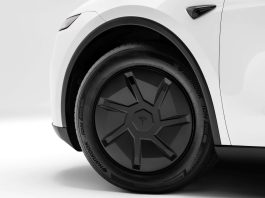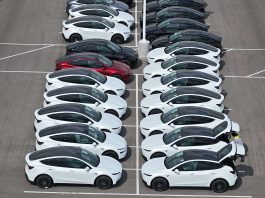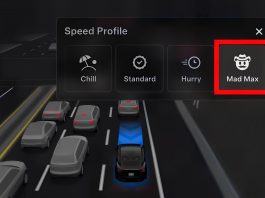A recent test in China managed to recreate the Tesla Robotaxi experience on the Full Self-Driving (FSD) software, namely, version 13.2.6, or FSD (Supervised). More shockingly, the interior camera, which is normally used to check the attention of the driver, was covered during the test, and entirely put in the driving AI of Tesla. Learn more about the major new hardware change for self-driving.

A Wild Goose Chase into Robotaxi Future
Even though Tesla has not yet officially started their Robotaxi in China, this Chinese test made people incredibly interested in what awaits them. Under the control of FSD (Supervised) 13.2.6, the Tesla passed through a complex city, dense traffic, dangerous intersections, carefree mobility scooters, disjointed pedestrians, and unpredictable construction areas. The result? A ride of a smooth, human-like movement that left spectators in awe, not only due to the technical composition but also by its suggestions of the future.
The key takeaway was the degree of confidence exhibited by the car over a real-world situation in the urban traffic of China, which is an extremely challenging place filled with behaviors that are unexpected and a low level of discipline. Tesla FSD not only made it in such an environment, but it flourished.
Robotaxis in China.👀😬 pic.twitter.com/59VJdyxhw8
— Aaron Li (@boolusilan) June 25, 2025
FSD (Supervised) v13.2.6 is Urban Complexity
The FSD (Supervised) v13.2.6 released by Tesla has made a large step in the development of autonomous software in the company. Although it still needs a licensed driver seated behind the wheel, the system has been able to take highway management to the next level by being able to change lanes automatically, read the traffic lights, yield to pedestrians, and sense and respond to reckless drivers.
In China, these skills are put to the ultimate test. Compared to the U.S., with its good driving conditions, obedient to the rules, Chinese cities display their unique traffic scheme that is more dynamic and difficult to reason, and even then, the FSD behaves more like a human driver in China. Nevertheless, FSD v13.2.6 proved to be flexible enough- it lowered speed when confronted with unforeseen scooters, stopped at busy crossings naturally, and drove off independently when cars were too slow. The decision-making that was implemented by the software was not robotic but rather instinctive, as though replicating a local driver who has a lot of experience.
Fat-Covered Camera, Thin-Covered Confidence
The weird part of the test was, perhaps, that the interior camera of the Tesla was covered completely. In normal operation, the cabin-facing camera that Tesla has installed is used to monitor the driver to be alert and aware, which is one of the primary elements of the Supervised label. Doing so would normally be hazardous, but in this carefully controlled test scenario, it was an excellent demonstration of trust towards the software.
Although it does not imply that Tesla would be ready to eliminate human supervision at the moment, it does cast some doubts on the distance to achieving a Level 4 autonomy, especially in the markets that Tesla has not tested and implemented its fleet of Robotaxis yet. California gets the green light for Robotaxi, which should be rolling out soon.
The Reason Why FSD Feels More Human in China
The behavior of FSD in China and in the U.S. poses one interesting trend that testers have observed regarding the difference in the behavior of FSD in these two countries. Whereas in America, the system is more prone to reservation (at times annoying levels), the Chinese FSD is more daring, but safe. It barges more aggressively through merges, faster at opening gaps in the traffic, and is more responsive to changing situations.
Such disparity can be partially attributed to the fact that Tesla’s neural net learns using local driving data. China’s traffic culture is so different that probably, it needs a certain driving character, and it seems this is what Tesla is already preparing. As opposed to a single-fitting AI, the practice in China by Tesla is associated with regional customization that allows the system to act naturally.



